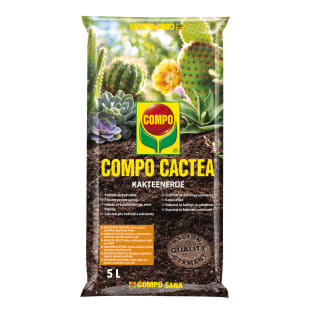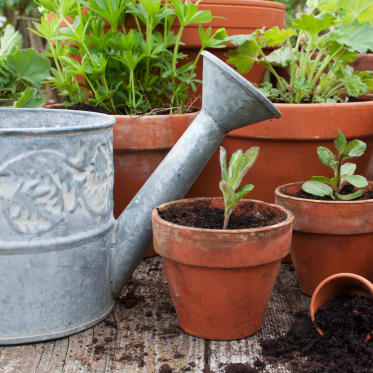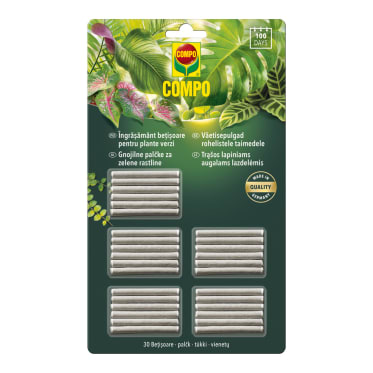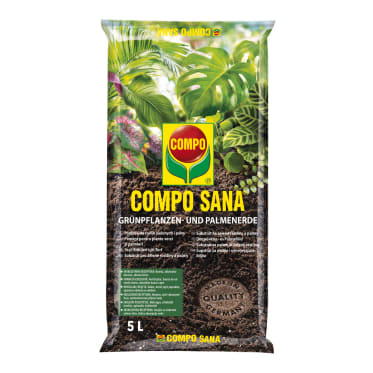Frequent search terms
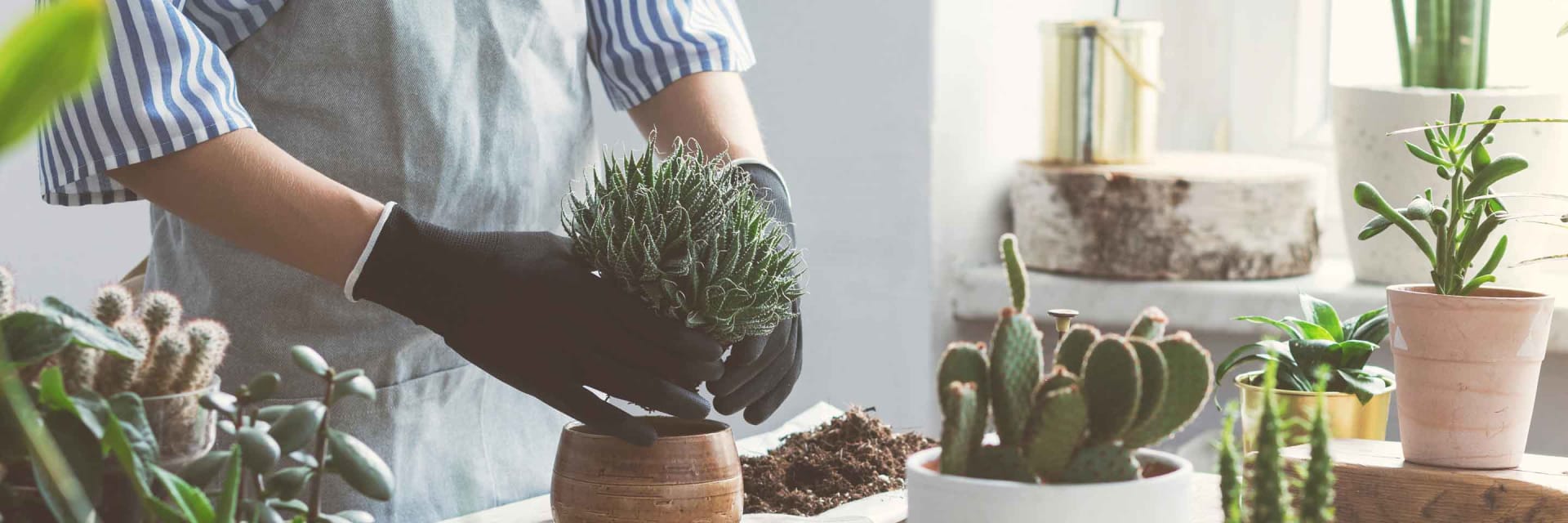
- COMPO
- Guide
- Plant Care
- Indoor plants
- Caring for cacti and succulents
Apply these tips and they will last forever
Caring for cacti and succulents properly
Simply light, love and air? Although cacti and succulents are among the toughest houseplants in the world, sometimes they simply don't give anything away. The metabolism of these dry-weather plants is extremely slow and often it only becomes apparent that something has gone wrong with their care after weeks or months. This article shows you how to tell early on if something is wrong with your green roommate. You will gain basic knowledge about positioning and watering your cacti and succulents and find valuable tips on repotting and fertilising houseplants.

What is the difference?
All cacti are succulents but not all succulents are cacti
Cacti and succulents are often mentioned together and are somehow similar, too. Cacti and succulents actually belong to the same plant genus and cacti are simply the best known plant family of the succulents. Strictly speaking, all cacti are succulents but not all succulents are cacti. Both plant families store fluid in their tissue. Most cacti and succulents also have a thick layer of wax on the outer skin, which protects against evaporation and burns. But only cacti have areola. These are soft cushions on the outer skin of the plant from which the spines emerge.
Positioning – Watering – Repotting – Fertilising
Four care tips for cacti and succulents
Not everyone likes it hot
Location

Cacti and succulents come from hot, dry regions and love locations that are bright and dry. Heated air is not a problem but you should not put your plant in a damp bathroom. There are big differences between cacti and succulents as far as sunlight is concerned. While most succulents love a spot at a sunny south-facing window, many cacti don't fit the stereotype of the hard-nosed desert dweller and will not tolerate blazing midday sun. We're pleased to say that there's a simple rule to help you find the perfect location for your cactus. Lighter green cacti will tolerate heat and sunshine better, while dark green specimens feel especially comfortable at an east- or west-facing window. But there are exceptions to the rule even here, so it's important that you adhere to the information on the label when buying a new cactus or succulent.
Depending on the weather
Watering

If there's one thing cacti and succulents have in common, it's their ability to store water. That's why these houseplants only need to be watered very rarely. Having said that, the actual water requirement always depends on the room temperature and your houseplant's phase of development. Since the substrate of cacti and succulents is highly permeable, some of the water will evaporate before the plant can even absorb it on hot summer days. Many of these sun worshippers are also in the middle of a growth phase in the summer and the formation of leaves and flowers cost the plants a lot of energy, which increases their need for water. This means that giving them the same amount of water all year round is not a solution. While in the winter you should often only water once a month, you may need to water on a weekly basis during the hot summer months.
Always wait until the soil has completely dried out before you water at any time of the year. If you are not yet very familiar with your plant, you can use a simple trick to find out whether a cactus or succulent needs watering. Just put a wooden kebab skewer in the pot and pull it out regularly for checking. The skewer will absorb water if there is still enough of it in the soil.
The most common cause of death of a cactus or succulent is standing water at the bottom of the pot. The roots of the desert dweller cannot cope with this and start to rot, meaning they are no longer able to absorb water. Always pour excess water from the planter immediately.
It's advisable to water with lime-free water, i.e. rainwater or filtered tap water.
Secret tip to prevent rotting roots
Repotting

Hardly any cacti or succulents grow rapidly. For them to enjoy long-term health, it's essential that the substrate has structural stability for their roots. Although special cactus soils are loosely packed and airy, that doesn't last forever and proper watering becomes a challenge when the soil collapses after a few years. To prevent waterlogging, you should repot your plant in fresh soil every 3-4 years.
The choice of the wrong soil is more detrimental to the health of a cactus or succulent than virtually any other plant. Normal potting soil is designed to store water, so the roots of these dry-weather plants would rot in it. Special cactus and succulent soils contain a perfectly balanced ratio of soil and quartz powder and thus prevent waterlogging. They retain structural stability for a prolonged period. In addition, the fertiliser contained is perfectly adapted to the needs of cacti and succulents.
Another important foundation stone that you can lay for the health of your cactus or succulent during the repotting process is to ensure the drain holes in the bottom of the pot are not blocked. To do this, simply place a few stones or fragments of clay in the bottom of the pot before you pour in the soil.
With care and intuition
Fertilisation
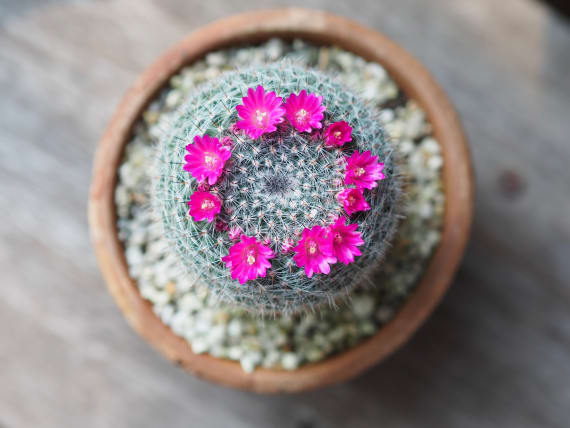
Even though cacti and succulents are extremely frugal companions, the nutrients in the limited soil of the flowerpot are eventually depleted. Nutrient deficiency is a particularly insidious problem with slow-growing plants because it's often too late to help the plant when it becomes visible externally. Providing the right amount of nutrients when growth is slow and water requirements are low calls for a certain degree of care and intuition. It's relatively safe to add a mild cactus fertiliser to the water every 3-4 weeks in the summer months when the cactus or succulent is growing. When you do this, pay close attention to the dosage information on the packaging, as the nutrients will do more harm than good to your plant if the concentration is too high. During the dormancy phase in the winter, most cacti and succulents usually don't need any fertiliser at all and even particularly slow-growing specimens should only be fertilised every 2-3 months as a precaution.
This might also interest you
Suitable products for cacti and succulents

